|
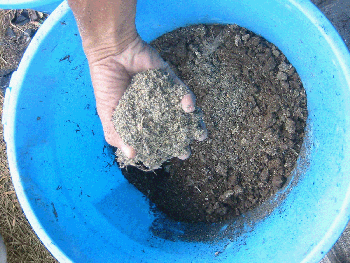 |
|
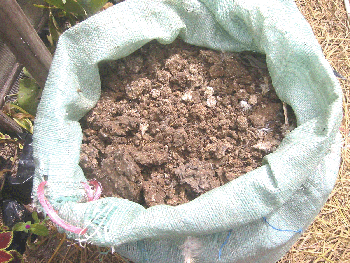 |
|
|
There are several ways to accomplish
the anaerobic decompostion process using reecycled plastic digesters. This is burnt rice
hulls. |
|
Chicken manure is a complete source
of minerals and trace elemets for organic farming. |
|
|
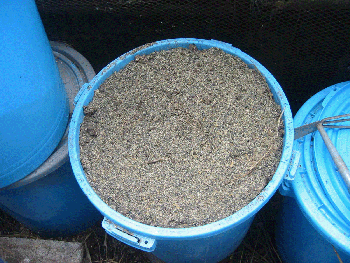 |
|
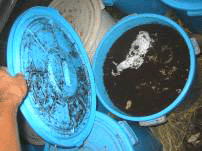 |
|
|
It is topped with inoculated burnt
rice hull to the brim and sealed for 2 weeks up to a month |
|
The blend should have decomposed in
a month's time. BIODEN is used as a bio-catalyst to facilitate the decompostion process
and prevent build-up of pathogens |
|
|
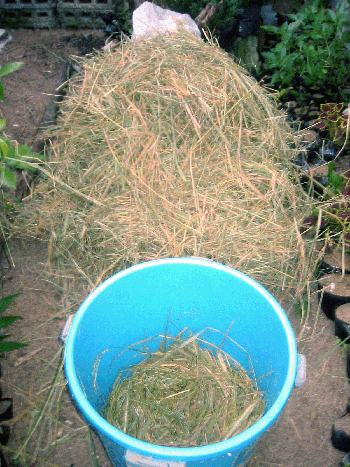 |
|
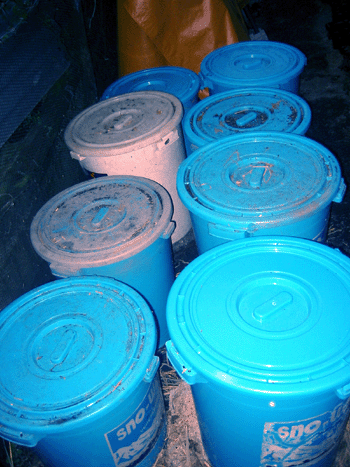 |
|
|
Rice straw being prepared for anaerobic
decomposition in recycled plastic containers, bio-digester. |
|
Biodigesters, more than a month old. Drained but
still sealed before use. |
|
|
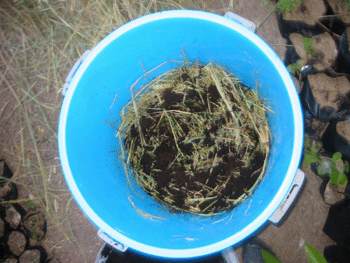 |
|
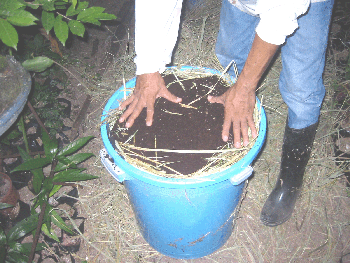 |
|
|
Burnt rice hull and straws must be
mixed together with some manure. Proper C:N ration should be observed. |
|
The mixture must be compacted to
minimize air pockets. |
|
|
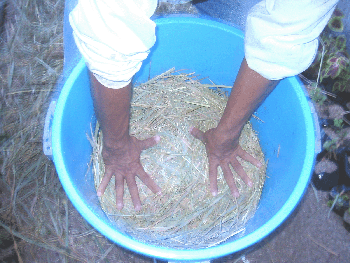 |
|
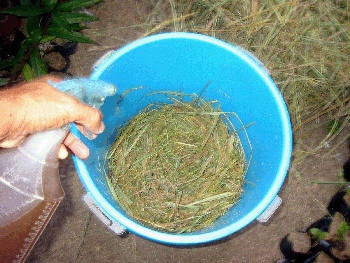 |
|
|
Another experiment in anaerobic decompostion with only rice
straw and spray of BIODEN bio-catalyst. |
|
Each half-inch layer is sprayed with
the inoculant |
|
|
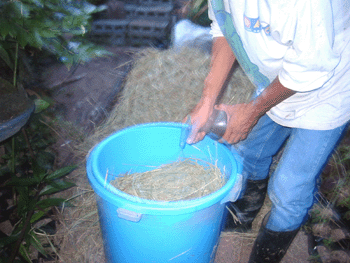 |
|
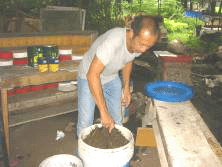 |
|
|
Until it is filled to the brim. A faster way to accomplish
this is to dip rice straw in a pickling dip, photo below. |
|
In about a month's time the pickle is ready, compacted bunch
of rice straw pickle. |
|
|
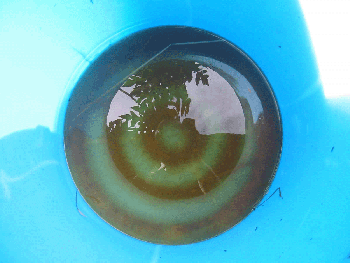 |
|
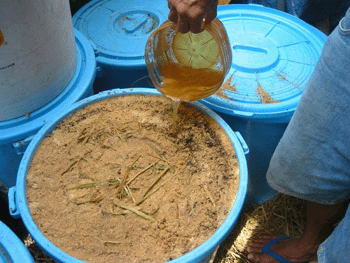 |
|
|
BIODEN pickling dip. A
bio-catalalyst that facilitates the anaerobic decomposition process. |
|
Chicken manure, rice bran and rice straw mixture with BIODEN
bio-cataluyst. Prepared before being sealed and hooked-up with other digesters for
maturity. |
|
|
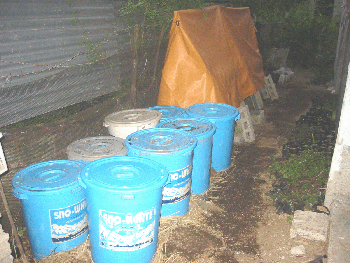 |
|
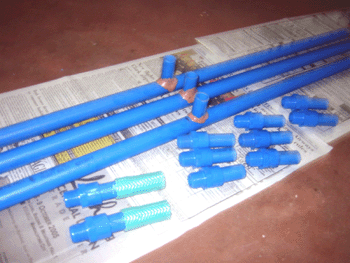 |
|
|
Battery of bio-digester. Matured
compost. |
|
Biodigester tanks are interconnected
with pipes to drain the leachate. This fluid is also used as liquid fertilizer. It is
drained-off from the tanks |
|
|
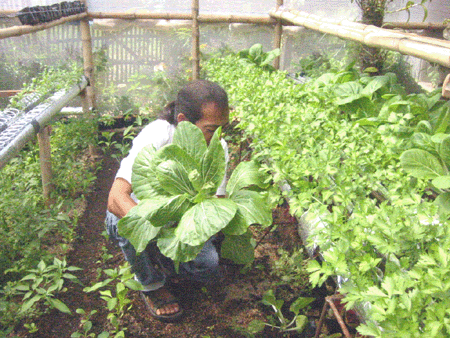 |
|
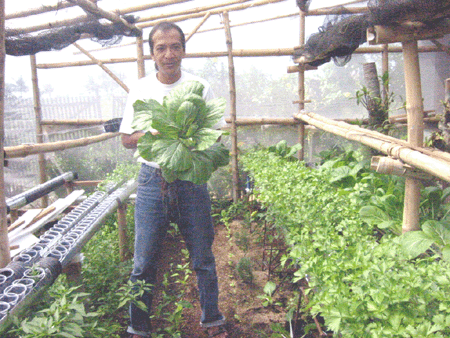 |
|
|
Chinese cabbage or pechay with digester technology. |
|
The secret is synergism, there is no
heat released in anaerobic decomposition. Energy is not lost, it is maintained. |
|
|
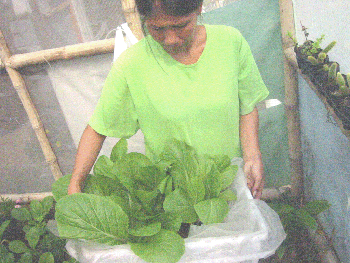 |
|
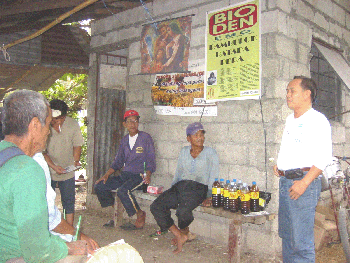 |
|
|
Young mustard harvest. If allowed
to grow for 27-30 days, leafy vegetables grow to be bigger and mistaken by consumers to be
rough and old. |
|
It is very difficult to convince
farmers to utililize this type of sustainable technology, the decompostion of rice straws
directly on the field. Money is lost when rice straws are burned. 90% of capital inputs or
investments are inside agricultural wastes. |
|
|
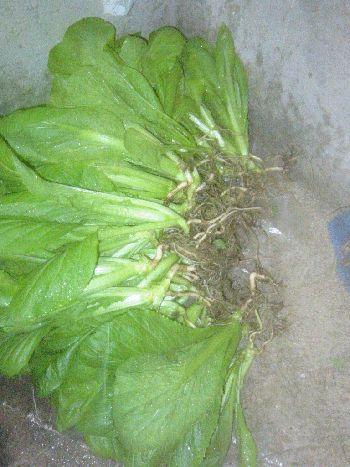 |
|
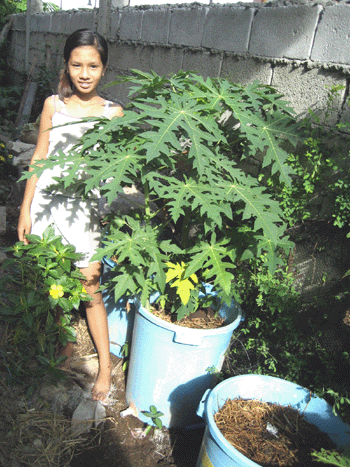 |
|
|
Large leaf mustard, results from the tests that we conducted
in anaerobic and aerobic decompostion utilizing a bio-catalyst. BIODEN |
|
Daughter Sarrah, now 12-years old,
pose for a souvenir photo with her papaya tree. Seedlings that she planted on top a
digester bin. |
|
|
 |
|
|
|
|
|
|
|
|
|
|
|
|
|